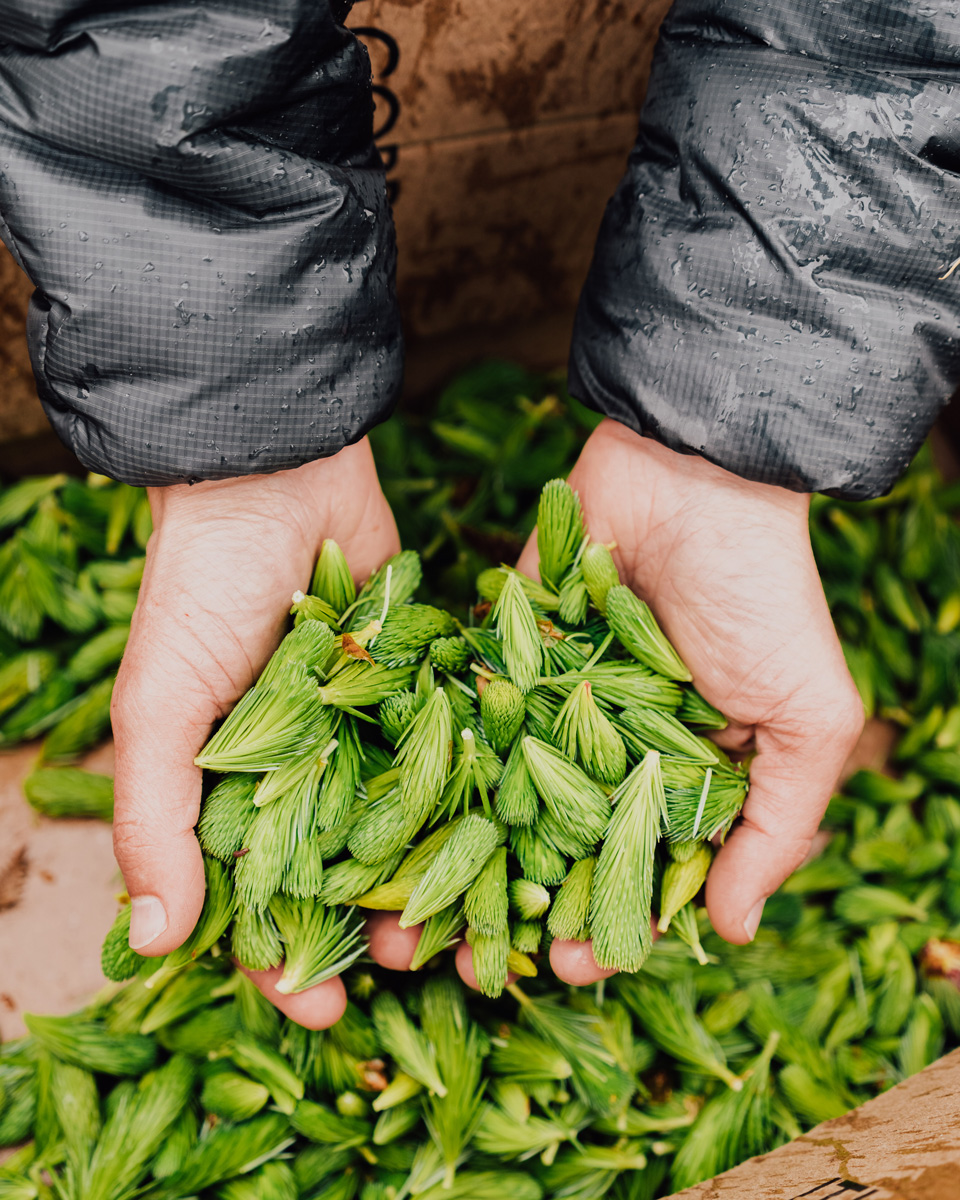Using spruce shoots in beer dates back as far as the Vikings

In the long history of brewing, basically every conceivable ingredient imaginable has been tried. While beer brewed with wormwood, mugwort or chicken (also known as “cock ale”) might not be pleasurable to the modern palate, one ingredient has shown itself to be thoroughly enjoyable and stands the test of time.
According to the Oxford Encyclopedia, using “spruce shoots in beer can be traced as far back as the ancient Scandinavians and their Viking descendants.” There is also a likely reference to its use in brewing in the Finnish epic, The Kalevala.
It’s this long history of spruce tips in beer that intrigues Dan Van Netten of Howl Brewing. Van Netten has an abiding fascination with exploring and brewing historical ales.
“The biggest interest [for me] was the early settlers who arrived on the East Coast. A lot of them had scurvy and they learned from the First Nations that the spruce was high in vitamin C.”
This benefit as an anti-scorbutic was famously exploited by Captain Cook, who gave spruce beer to his crews. The difficulty in sourcing barley and hops in colonial America lead to spruce tips being commonly used. Inspired by its history, Van Netten brewed a Virginia spruce ale he read about in a magazine dating back to the 1800s, which called for sarsaparilla, spruce tips and molasses.
This calls to mind Benjamin Franklin’s famous homebrew recipe, which also used molasses as a source of fermentable sugar, and spruce tips, likely used to make the beer somewhat more palatable. Fortunately, while the modern-day craft brewer doesn’t lack for grains or hops, many, specifically along the West Coast, are finding a place for spruce tips in their beers.
Sasha Howey, one of the brewers at Whistle Buoy in Victoria, B.C. has brewed two such beers. Her initial inspiration was one of the first spruce beers to be widely available in the province.

“My first spruce tip beer I ever had was from Tofino. I was living there after my degree and really, really liked it,” says Howey. “I always wanted to make a spruce tip beer after that.”
Whistle Buoy’s first kick at the can turned out so well they decided to more than double the amount of spruce they dry hopped with. This second spruce-tip beer sold out very quickly.
Other spruce-tip beers brewed in B.C. include select brews from Steel and Oak, Three Ranges, Île Sauvage, an award winner from Mount Arrowsmith, and a blackberry sour from Twin Cities, which Howey sums up succinctly as, “so good.”
Howl Brewing has also created a number of different recipes, including the aforementioned Virginia spruce ale, a recent IPA, some lagers and, their most popular, a chaga spruce ale. Chaga is a mushroom that grows on birch trees and provides a vanilla-like note to complement the spruce. Van Netten also really likes to combine it with blackberries.
How a brewer chooses to brew with spruce tips will have a notable effect on the flavour profile, in much the same way hops do. For example, Howey utilises the spruce tips in the whirlpool and as a dry hop. Others use them throughout the boil much like bittering, flavour and aroma hops.
Van Netten has experimented with a variety of techniques, but favours what he calls a steep, or an even more unconventional method of adding spruce tips at the same time as he pitches the yeast. This method creates a very particular flavour note he is looking for, which he describes as “Watermelon Nerds.” Van Netten notes that boiling the spruce tips completely changes this steep, into “more Norwegian sauna, more damp and earthy.” He also used descriptors such as brightness, resiny and “citrusiness.”
When describing the flavour of spruce tips in beer, Howey points out the age of the spruce tips makes a difference.
“Definitely fresh and piney, but beyond what you think it is, it’s pretty sweet and jammy. Younger spruce tips are going to be a lot more sweet, older ones more bitter.”
While sourcing barley and hops has become relatively easy for breweries, sourcing spruce tips is remarkably less so. Brewing a spruce-tip beer typically requires someone to forage for them.
Howl sources theirs from Forager for Dinner, a wildcrafting company based in Port Alberni, B.C., while many other breweries get a crew together and make a day of it, such as Whistle Buoy did for their first spruce-tip beer. For their second-time around, they were running out of time to collect the bright green springtime growths, so Howey spent an epic day around the Jordan River area collecting them.
“I spent the day picking by myself and it was honestly the loveliest day. Truly wonderful,” says Howey.
When talking about spruce-tip beers, much like wine grapes, it’s hard to avoid the concept of terroir. Here is an ingredient that is different yet similar all over the world and can definitely signify “a sense of place.”
Having someone at the brewery, maybe even the brewer themself, forage for this ingredient cements the relationship between place, brewery, brewer, beer and, finally, you the drinker. Plus, who doesn’t want to drink a beer that tastes like walking through a sun-kissed forest in spring?
REQUIRED DRINKING

Try these brewed-in-B.C. spruce tip beers
Steel & Oak // Turned Out Spruce Tip Ale
R&B Brewing // Spruce Tip India Pale Ale
Tofino Brewing // Spruce Tree Ale
Ile Sauvage // Pointe Spruce Tip Golden Sour
Howl Brewing // Spruce Tip IPA




